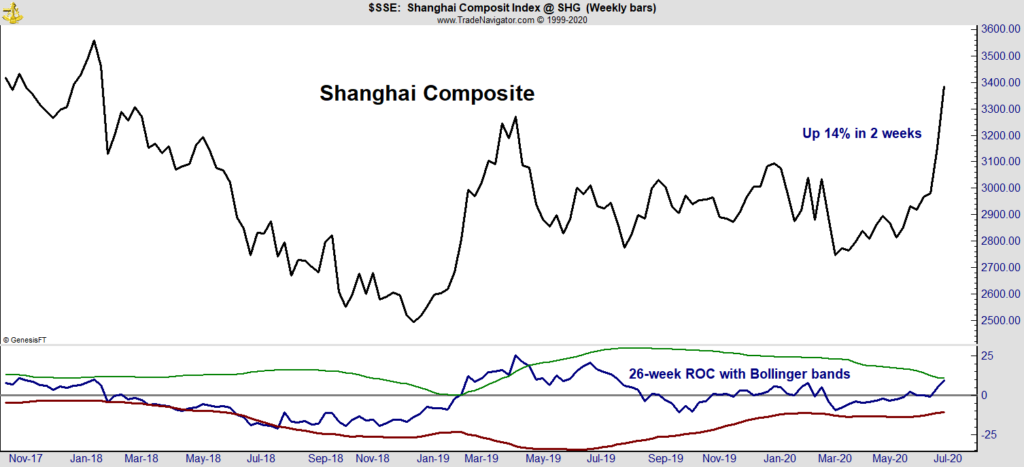Few things in life are certain. In the early 1700s, an obscure English writer noted: “Tis impossible to be sure of anything but death and taxes.”
More than 300 years later, it’s safe to add a third certainty to the list. Today, we can be certain of death, taxes and Chinese stock market bubbles.
The latter are assured because regulators cause them — and even encourage them.
According to CNN:
“The signal from the regulators is clear: They are pushing for the development of margin trading and short selling business in China,” wrote Ma Ting Ting, an analyst for Chinese securities firm Guosheng Securities… “We expect regulators to continue to boost stock market activity and try to guide even more funding from banks and insurers into the stock market.”
This decision had an immediate impact. Think of the Shanghai Composite Index as China’s version of the Nasdaq index.
The Shanghai Composite Index soared, as you can see in the chart below:
Shanghai Composite Index Soared 14% in 2 Weeks

Source: Trade Navigator
At the bottom of the chart is a bubble timing tool.
In technical terms, it’s a 26-week rate of change indicator with Bollinger Bands added to the ROC. The bands use a 50-day moving average (MA) and are set 2.1 standard deviations from the average. These metrics are based on John Bollinger’s book, Bollinger on Bollinger Bands.
In simpler terms, bubbles start when the MA breaks above the top band. The bubble ends when the MA drops back below the top band.
This indicator works well in China, where government officials regularly start and stop bubbles.
Somehow, the smart money always seems to sell before regulators change the rules. Their selling moves the MA below the upper band. And we get a sell signal days before the crash.
How You Can Use Chinese Stock Market Bubbles
There are two ways to benefit from Chinese stock market bubbles.
- Nurture close connections to regulators so you’ll know about the changes. That isn’t an option for most.
- Use the iShares Trust — iShares China Large-Cap Fund (NYSE: FXI). Other exchange-traded funds are also available.
This is an aggressive trade. But bubbles deliver large gains before they burst. And trading them can be profitable.
Nothing is certain — except for death, taxes and the existence of Chinese stock market bubbles.
Timing the end of the bubble is always a challenge. But using this bubble tracking tool has worked in the past.
• Michael Carr is a Chartered Market Technician for Banyan Hill Publishing and the Editor of One Trade, Peak Velocity Trader and Precision Profits. He teaches technical analysis and quantitative technical analysis at New York Institute of Finance. Mr. Carr also is the former editor of the CMT Association newsletter Technically Speaking.
Follow him on Twitter @MichaelCarrGuru.




